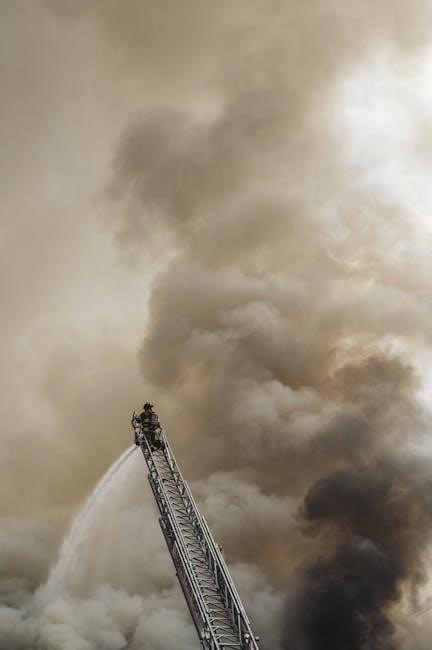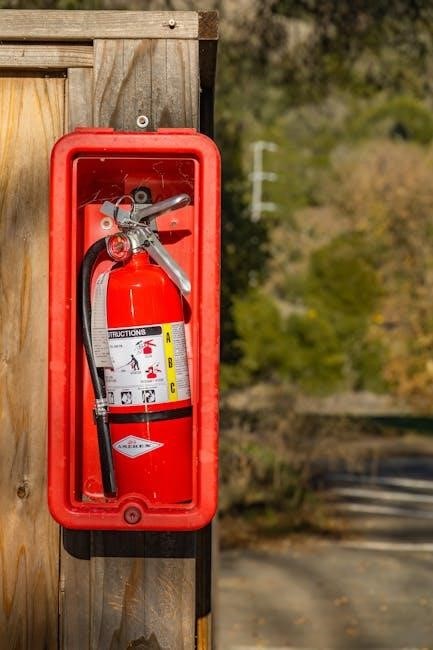Fire extinguishers are essential safety devices used to control and extinguish fires, available in various types and sizes, including portable and fixed models, for different applications and locations, online resources provide detailed information and guides on their uses and types, in pdf format, for easy access and reference, with clear instructions and diagrams, to help users understand and operate them correctly and safely, in emergency situations, to minimize damage and risk, and ensure effective fire suppression and prevention, with proper training and maintenance, to guarantee optimal performance and reliability, in various settings, including homes, offices, and public spaces, where fire safety is crucial, and human life and property are at risk, requiring prompt and effective action, to prevent and mitigate fires, and their consequences, with the help of fire extinguishers, and other fire safety equipment, and measures, to create a safer environment, and reduce the risk of fires, and their impact, on people, and property, and the environment, with the use of fire extinguishers, and other fire safety devices, and techniques, to control and extinguish fires, and prevent them from spreading, and causing damage, and harm, to people, and property, and the environment, with the help of fire extinguishers, and other fire safety equipment, and measures, to create a safer environment, and reduce the risk of fires, and their impact, on people, and property, and the environment, and to save lives, and property, and reduce the risk of fires, and their consequences, with the use of fire extinguishers, and other fire safety devices, and techniques, to control and extinguish fires, and prevent them from spreading, and causing damage, and harm, to people, and property, and the environment.
Overview of Fire Extinguisher Types
Fire extinguishers are classified into different types based on the extinguishing agent used, including water, carbon dioxide, dry chemical, and wet chemical. These types are designed to combat specific classes of fires, such as ordinary combustible, flammable liquid, and electrical fires. The classification of fire extinguishers is crucial in ensuring that the right type of extinguisher is used to effectively combat a fire. Various online resources, including pdf guides, provide detailed information on the different types of fire extinguishers, their characteristics, and uses. Understanding the overview of fire extinguisher types is essential in making informed decisions when selecting and using fire extinguishers. This knowledge helps individuals to identify the most suitable fire extinguisher for their specific needs and applications, and to use them effectively in emergency situations, thereby minimizing damage and risk. Effective use of fire extinguishers requires knowledge of their types and applications.

Classification of Fires
Fires are classified into categories, including class A, B, and C, with different characteristics, and requirements, for extinguishing, and control, using various methods, and techniques, effectively.
Understanding Fire Classes and Extinguisher Uses
Understanding fire classes is crucial for selecting the right extinguisher, as different classes require specific extinguishing agents, and techniques, to effectively control, and extinguish fires. The classification of fires into classes A, B, and C helps determine the appropriate extinguisher to use, and the method of extinguishing, to ensure safety, and minimize damage. Fire classes are defined by the type of fuel involved, and the extinguishing agent required, to control, and extinguish the fire. For example, class A fires involve ordinary combustible materials, such as wood, and paper, and require a water-based extinguishing agent. By understanding fire classes, and extinguisher uses, individuals can make informed decisions, and take appropriate actions, to respond to fires, and ensure a safe environment. This knowledge is essential for fire safety, and prevention, and can be found in online resources, and guides, including pdf documents.

Types of Fire Extinguishers
Fire extinguishers come in different types including water, carbon dioxide, dry chemical, and wet chemical extinguishers, each designed for specific fires and applications, online guides available.
Water, Carbon Dioxide, Dry Chemical, and Wet Chemical Extinguishers
Water extinguishers are suitable for class A fires, involving paper, wood, and cloth, and are commonly used in offices and homes. Carbon dioxide extinguishers are effective against class B and C fires, involving flammable liquids and electrical equipment. Dry chemical extinguishers are versatile and can be used on class A, B, and C fires, making them a popular choice for general use. Wet chemical extinguishers are designed for class K fires, involving cooking oils and greases, and are often used in commercial kitchens. Each type of extinguisher has its own unique characteristics and uses, and it is essential to understand their differences to ensure effective fire suppression. Online resources, such as pdf guides, provide detailed information on the uses and applications of each type of extinguisher, helping users to make informed decisions and stay safe in emergency situations.

Selection and Use of Fire Extinguishers
Proper selection and use of fire extinguishers requires training and knowledge of extinguisher types and classes, online resources provide guides and pdf manuals for reference and education purposes always.
Importance of Choosing the Correct Extinguisher Type
The importance of choosing the correct extinguisher type cannot be overstated, as it is crucial for effective fire suppression and prevention of damage and harm.
Using the wrong type of extinguisher can be ineffective and even dangerous, highlighting the need for proper selection and use.
Online resources, including pdf guides and manuals, provide valuable information on the different types of fire extinguishers and their uses, helping users make informed decisions.
By understanding the characteristics of different fires and the corresponding extinguisher types, individuals can ensure they are equipped to respond to emergency situations.
Proper selection and use of fire extinguishers require training and knowledge, and online resources can provide the necessary education and guidance.
Choosing the correct extinguisher type is essential for ensuring safety and minimizing damage in the event of a fire.
It is essential to consider the specific needs and hazards of a given location when selecting fire extinguishers.
Online resources can help users determine the most suitable extinguisher type for their specific needs and provide guidance on proper use and maintenance.
By choosing the correct extinguisher type, individuals can help prevent fires from spreading and causing harm.
Online guides and pdf manuals can provide detailed information on fire extinguisher selection and use.
Proper fire extinguisher selection and use can help save lives and property.
Effective fire suppression requires the correct extinguisher type.
Online resources can help users make informed decisions about fire extinguisher selection and use.
Proper selection and use of fire extinguishers are critical for ensuring safety and preventing damage.
It is essential to choose the correct extinguisher type for effective fire suppression.
Online guides and pdf manuals can provide valuable information on fire extinguisher selection and use, helping users make informed decisions and ensure safety.

Fire Extinguisher Safety and Maintenance
Regular inspections and maintenance ensure fire extinguishers function correctly and safely, with online resources providing guides and pdf manuals for proper upkeep and handling procedures always.
Proper Use and Maintenance of Fire Extinguishers
Proper use and maintenance of fire extinguishers are crucial to ensure they function correctly in emergency situations. Regular inspections and maintenance can help identify potential issues and prevent accidents. Online resources, including pdf manuals, provide detailed guides on how to properly use and maintain fire extinguishers. These guides outline the importance of regular inspections, maintenance, and testing to ensure fire extinguishers are fully functional and ready for use. Additionally, they provide information on how to properly store and handle fire extinguishers, as well as how to identify and address potential hazards. By following these guidelines, individuals can help ensure their fire extinguishers are in good working condition and ready to use in case of an emergency, which can help save lives and prevent property damage. Proper maintenance is essential for fire extinguisher safety.
